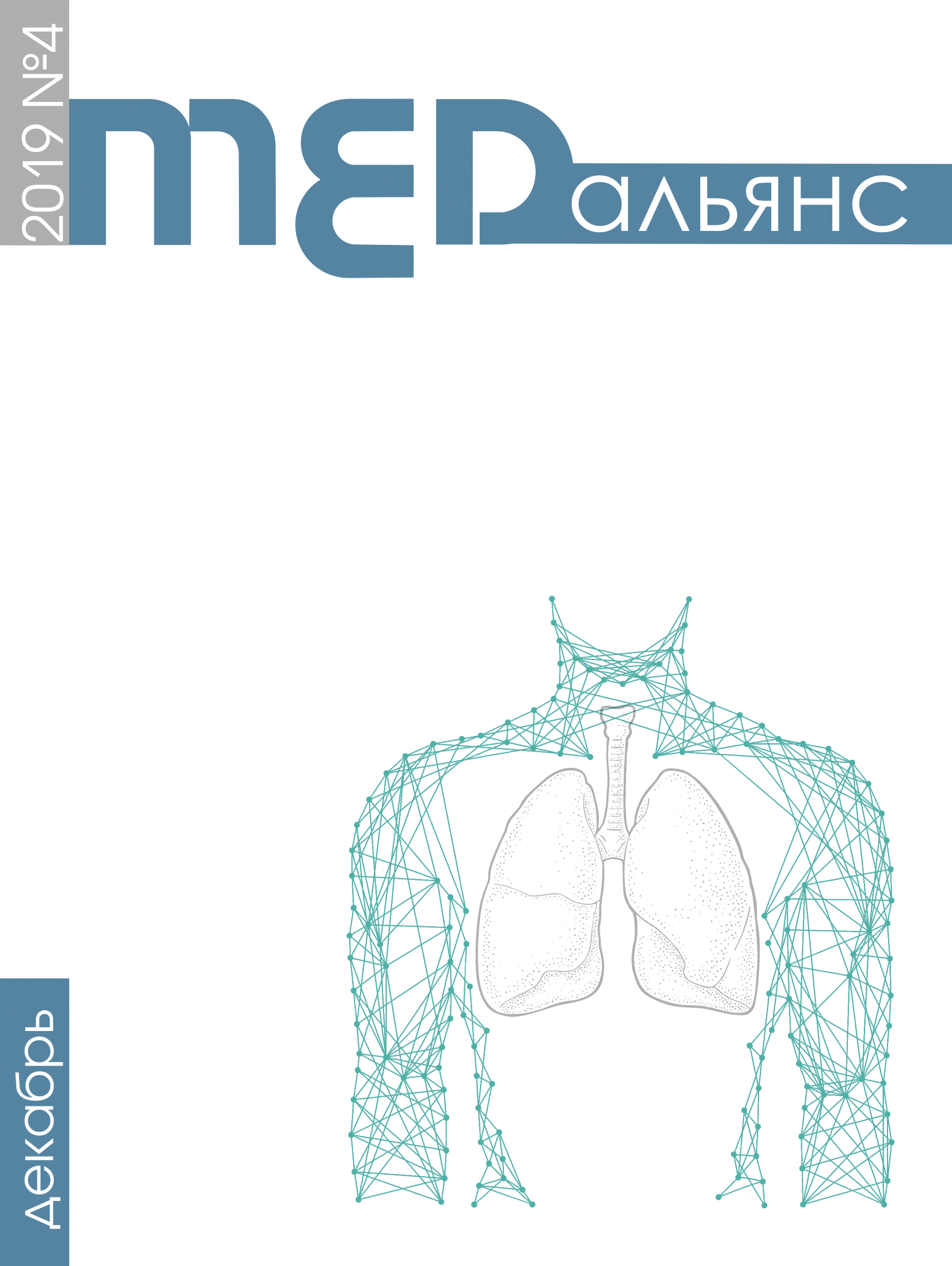Abstract
The article is devoted to the effectiveness of treatment of drug-resistant tuberculosis in HIV-infected patients using new-generation drugs. Treatment of tuberculosis with MDR and XDR MBT in patients with HIV infection is a complex and urgent task. Materials and methods. We examined 63 patients with pulmonary tuberculosis with MDR and XDR MBT with HIV infection, who were divided into groups: group 1 (n=12) received anti-TB drugs taking into account PM MBT without the inclusion of “new” generation drugs; group 2 (n=19) received treatment with the inclusion of bedaquiline (Bdq) in the treatment regimen; group 3 (n=13) received treatment with thioureidoiminomethylpyridinium perchlorate (Tpp); group 4 (main) (n=19) took Bdq and Трр as part of combined chemotherapy. Clinical, radiological, and laboratory data are presented. Groups are comparable in clinical, radiological and bacteriological characteristics. Statistical data processing was carried out using the Statistica 8 software package, including the calculation of confidence intervals using Fisher's exact test. Results and discussion. The number of CD4 cells in patients with tuberculosis and HIV infection was 350 or more. By the end of the 1st month of treatment, the cessation of bacterial excretion was significantly more often (p<0.05) in patients taking bedaquiline and thioureidoiminomethylpyridinium perchlorate or bedaquiline as part of chemotherapy, compared with groups receiving thioureidoiminomethylpyridinium perchlorate and not receiving new generation drugs. Against the background of the therapy, the symptoms of intoxication ceased to be detected in groups 2 and 4 by 1.5 months, in group 3 after 2 months, in group 1 after 2.5 months. Peripheral blood leukocytosis persisted by the end of the intensive phase of treatment in single patients in groups receiving perchlozone (group 3) and in group 1st. By the end of the intensive phase of treatment, a stable cessation of bacterial excretion was achieved in all patients of groups 2 and 4. In the 3rd group, this indicator amounted to 84.6% (11 out of 13 people), in the 1st group — 66.7% (8 out of 12 people). By the end of the 1st month of treatment, the cessation of bacterial excretion was significantly more often (p<0.05) determined in patients taking the combination of bedaquiline and thioureidoiminomethylpyridinium perchlorate (84.2%) and only bedaquiline (78.9%) compared with patients of groups 1st and 3rd, respectively 38.5% and 25%. Conclusion. The inclusion of bedaquiline and thioureidoiminomethylpyridinium perchlorate and bedaquiline in the complex chemotherapy of tuberculosis with MDR and XDR MBT in HIV-positive patients significantly increases the effectiveness of treatment in terms of stopping bacterial excretion and closing decay cavities.

